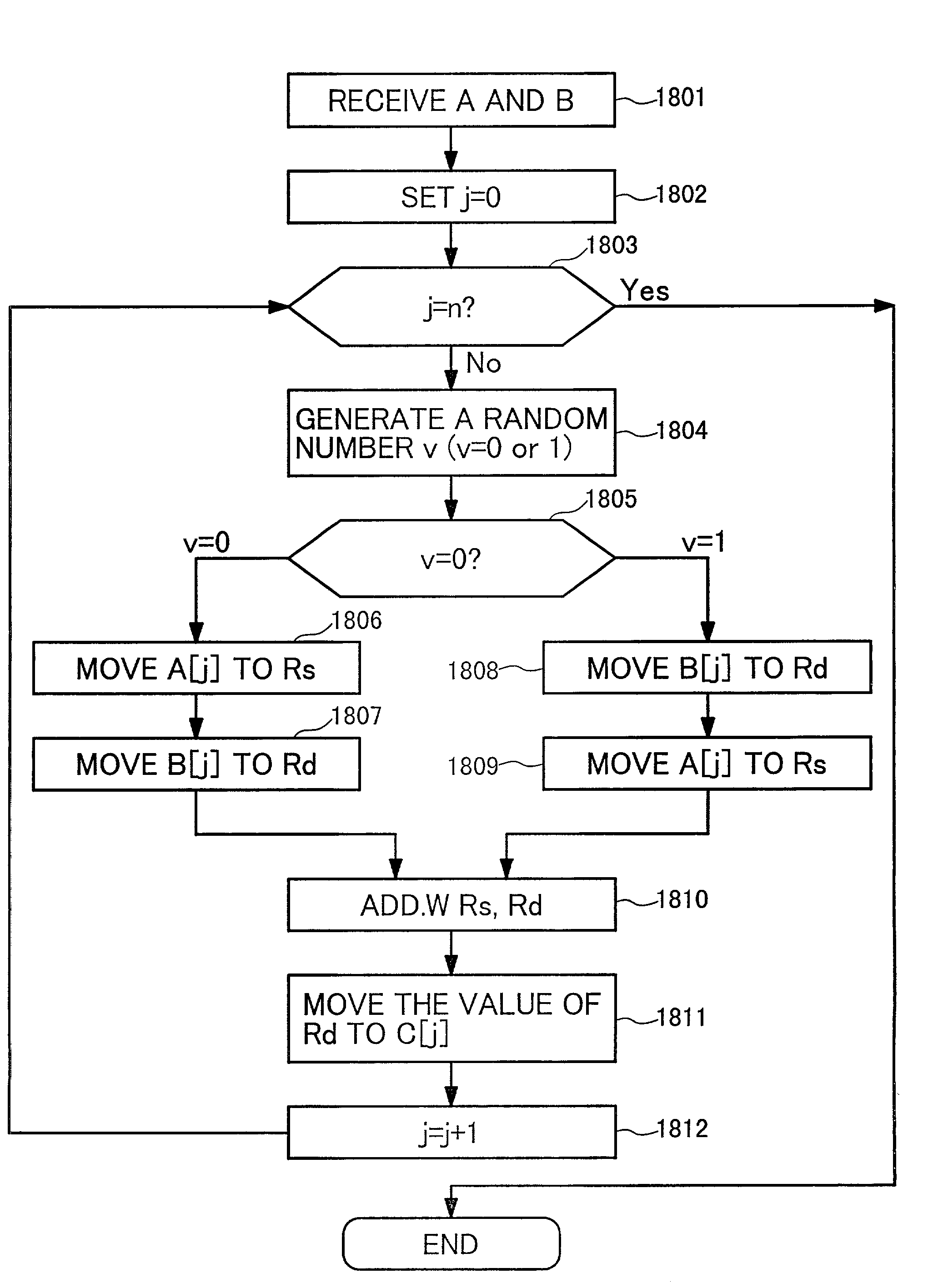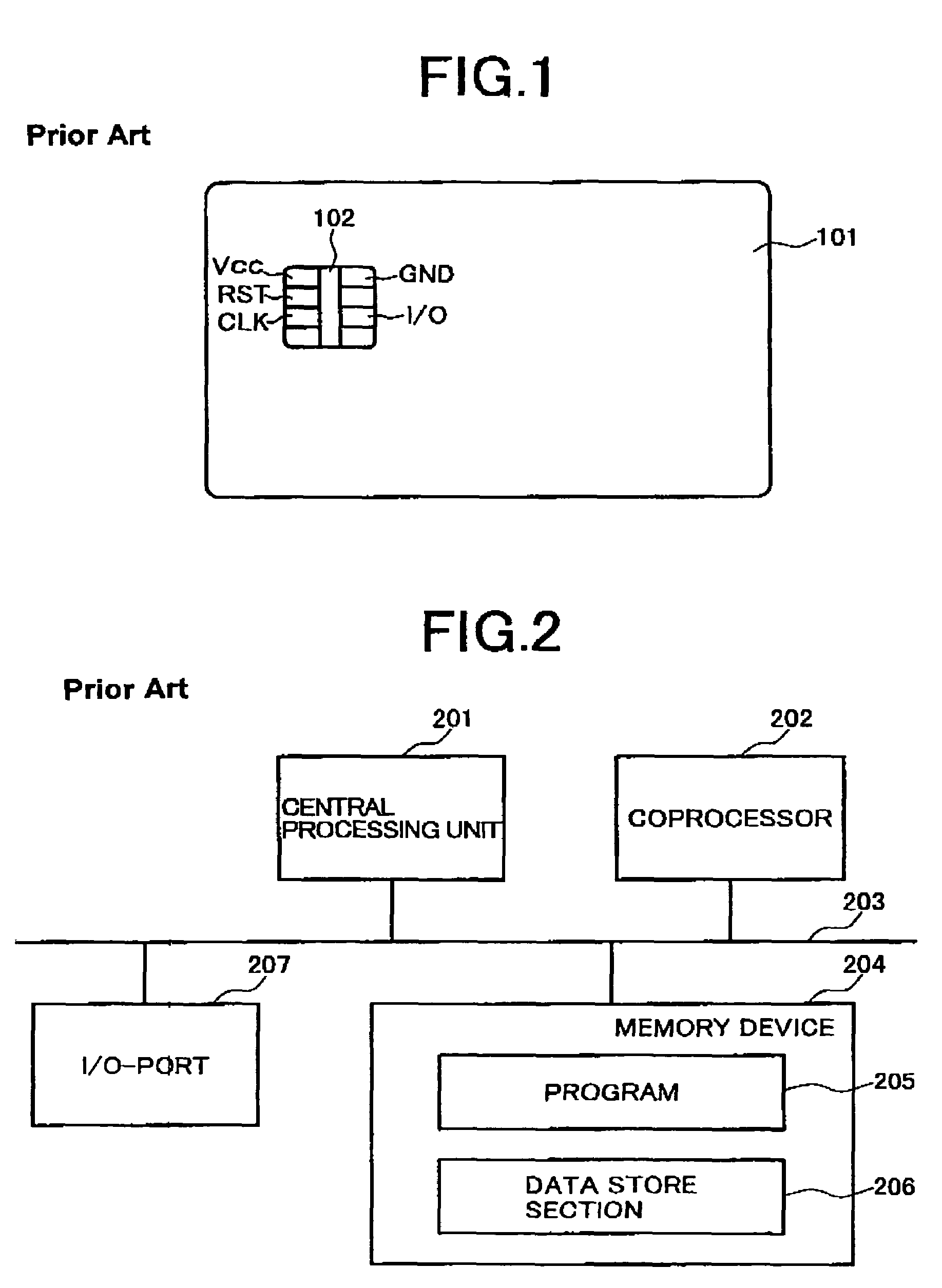Tamper-resistant processing method
a cryptoprocessing and processing method technology, applied in the direction of program control, unauthorized memory use protection, instruments, etc., can solve the problems of difficult estimation of the processing inside the ic card chip or the secret key from the waveform of the consumption current observed, and achieve the effect of reducing noise and enhancing the present invention
- Summary
- Abstract
- Description
- Claims
- Application Information
AI Technical Summary
Benefits of technology
Problems solved by technology
Method used
Image
Examples
Embodiment Construction
[0051]As an introduction to the explanation of embodiments, a basic algorithm of modular exponentiation calculation in RAS cryptosystem using CRT, and the addition chain method and the sliding window system representative of modular exponentiation calculations will be explained.
[0052]In the RSA cryptosystem, a product N of 2 large primes P and Q, for example 512 bits each, and number E (in many IC cards, 3 or 65537 is used) which is mutually prime with N are adopted. Those numbers N and E are registered on a public key file as a public key. In this situation, a transmitter B transmits the data (a plaintext) M expressed by a number of larger than 1 and smaller than N−1 in an encrypted form,
Y=M^E MOD N,
to the possessor A of the public key, where M^E is an expression showing Eth power of M. The possessor A who receives the ciphertext Y calculates with the use of the secret key X which satisfies the expression, XE MOD (P−1) (Q−1)=1, calculates
Y^X MOD N
[0053]In the above expression, (P−1...
PUM
 Login to View More
Login to View More Abstract
Description
Claims
Application Information
 Login to View More
Login to View More - R&D
- Intellectual Property
- Life Sciences
- Materials
- Tech Scout
- Unparalleled Data Quality
- Higher Quality Content
- 60% Fewer Hallucinations
Browse by: Latest US Patents, China's latest patents, Technical Efficacy Thesaurus, Application Domain, Technology Topic, Popular Technical Reports.
© 2025 PatSnap. All rights reserved.Legal|Privacy policy|Modern Slavery Act Transparency Statement|Sitemap|About US| Contact US: help@patsnap.com



